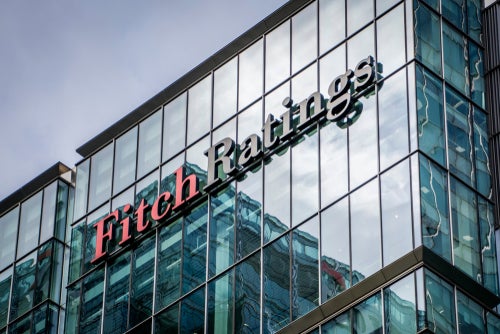
The shape of the debate on diversity and inclusion (D&I) in the boardroom is shifting. Alejandro Gonzalez speaks to two recruitment experts about the changing face of boardrooms.
The Black Lives Matter protest “is likely to prompt many UK boardrooms to look at their corporate messaging to decide if it’s been appropriate or acceptable, particularly on where they stand on diversity and inclusion,” says Eli Burns, an independent human resources consultant and D&I specialist.
“The tone around discussing diversity in the boardroom is changing,” says Burns, whose HR experience includes advising financial services and asset finance companies in the UK.
One of the key drivers for change is that “there is now more robust evidence around the business case for diversity as more studies have come out linking financial performance to leadership teams who are more representative of the communities they serve,” he says.
The other driver is that “the public is demanding that companies who say their strategic priority is ethnic minority representation, have something to show for it. The public will be asking: where are your ethnic minority leaders and where are your BAME networks?”, says Burns.
Social expectations around representation in the workplace are changing and companies need to catch up or risk being left behind, says Burns.
How well do you really know your competitors?
Access the most comprehensive Company Profiles on the market, powered by GlobalData. Save hours of research. Gain competitive edge.

Thank you!
Your download email will arrive shortly
Not ready to buy yet? Download a free sample
We are confident about the unique quality of our Company Profiles. However, we want you to make the most beneficial decision for your business, so we offer a free sample that you can download by submitting the below form
By GlobalDataLegal requirements around gender pay reporting have brought this issue to public attention, resulting in more scrutiny at corporate board level alongside increased public pressure, with company reputations on the line, he says.
“Ethnicity pay reporting has been through consultation in the UK and is likely to be implemented in the near future, so this can be expected to drive change in a similar way, with the media playing a part,” says Burns.
Boardrooms and D&I
Drivers for change
If progress is to be made in BAME recruitment, it will need to come from the bank asset finance companies who have deeper pockets and are better placed to drive change.
Sean Toms, who for 20 years has run Robinson Toms Recruitment, a specialist UK and European asset finance and leasing recruitment firm, says size matters.
“The largest of the employers in the finance and leasing sector, the tier-one, and larger tier-two bank financiers do have D&I professionals on staff, possibly now for 10 years or more. And the bigger a company is, the easier it is to set targets for D&I, because the resources are there.
But, in the UK, an asset finance company with 250+ staff is unlikely to have a dedicated D&I individual, but they might have someone whose responsibility incorporates that but it won’t be their primary job function. “Also, it’s less easy to set targets in a smaller company and to have people deployed to monitor and drive outcomes, says Toms.
On the issue of racial discrimination, Toms is categorical: “In my 20 years of recruiting, I have never heard any manager of any company make any comment – or infer or imply – that there was any race aspect to any hiring programme at all.
“I’d like to think that asset finance should be attractive to everyone and anyone, but the figures don’t yet bear that out, says Toms.
Preventing change
So what’s holding companies back? When presented with an opportunity to diversify their boardrooms, those recruited often reflect closely the people who are already in the organisation, says Burns.
This could be because companies think the BAME candidates might not have the same working history within the industry when compared to other candidates, or have the relevant experience at the required level to move into the leadership positions the company is offering, adds Burns.
Companies may want to be pro-active about D&I, but they also don’t want to fall foul of the Equality Act 2010, which makes it largely unlawful for employers to discriminate against job applicants (or to set quotas to recruit or promote groups of people) based on age, gender, disability, race or religion.
Companies need to be able to show that jobs have been given to the best possible candidate rather than as a result of positive action, which might include encouraging BAME people to apply for jobs.
Some companies are experimenting with blind recruitment and recruiting from outside of the industry, non-executive director roles can offer individuals a chance to step into a leadership role without needing the same depth of industry experience as other executive roles, for example, says Burns.
Qualifications
Many organisations are realising that tweaks to recruitment criteria – particularly educational qualifications – may be enough to widen the talent pool to include more BAME candidates, prompting some companies to ask: Does the standard need to be a 1st Class degree? says Burns.
Where once upon a time only top graduates from Russell Group universities were considered for the best management roles, today many big employers are wondering if broadening the scope of universities may offer a way to open up the talent pool to more BAME candidates.
“If you are fishing from the same pool, you’re only going to get the same kind of people,” says Burns.
He adds that, companies may benefit from looking more closely at their Talent Review Process and asking: What is the diversity profile of those going on key training programmes? What do performance ratings say when analysed by ethnicity? And what about the talent pipeline?
“Key to understanding how ethnicity factors in, is the collection of sensitive personal information which can be used to draw insight and conclusions; most companies will not have this data for everyone, so improving the completeness of this data-set is a good place to start,” he says. There is also evidence that employers are looking to recruitment consultants to help change the makeup of their boardrooms and senior leadership teams.
Toms says: “A few years ago, we were told by the outsource provider to a tier-one UK bank that our retention on their preferred supplier list would be linked to our providing at least 30% of CVs for senior roles (c.£100,000) from female candidates. It was put in writing that we should positively discriminate in favour of women.
“Whilst recruiters acknowledge and support the objectives of diversity, hiring managers have to hire the very best available to maintain their company’s market position, crucially it is not human resource leaders who get fired if a manager or director underperforms by not hiring the best available irrespective of gender.”
Another recruitment professional who asked to remain anonymous says: “A global HR manager for a leasing company who approached me three or four years ago said: ‘Our company is too pale, stale and male’.”
Trade bodies also have a role to play. There have been a number of efforts within the UK leasing sector in recent years that address D&I, such as by the Leasing Foundation and the Finance & Leasing Association, “and that needs to continue,” says Toms.
Ethnic pay gap may be on the cards for UK plcs







